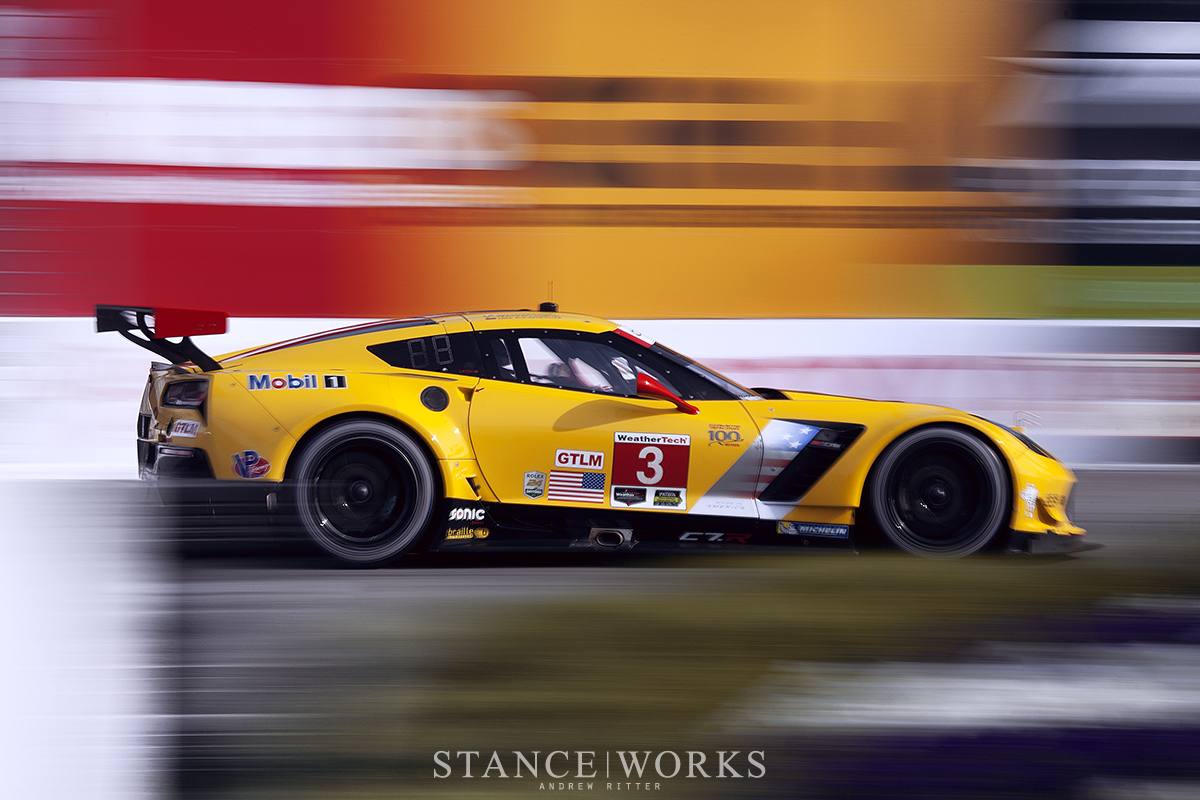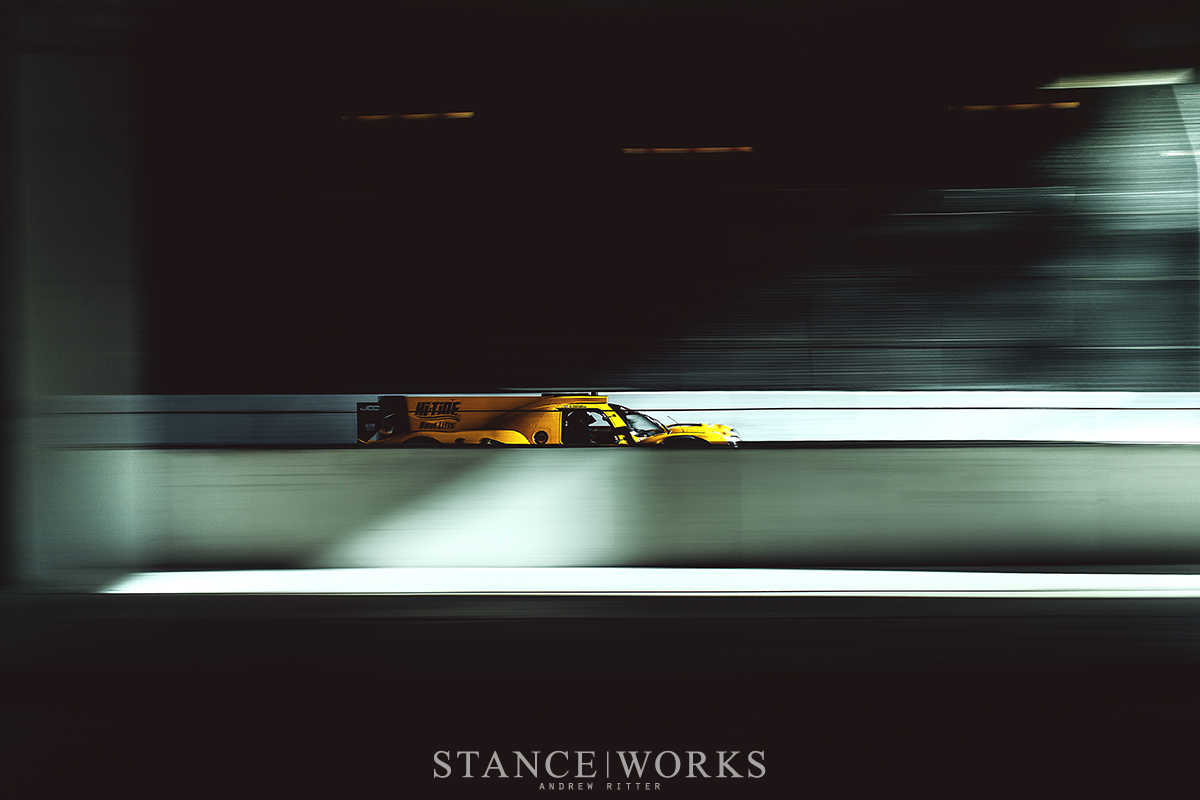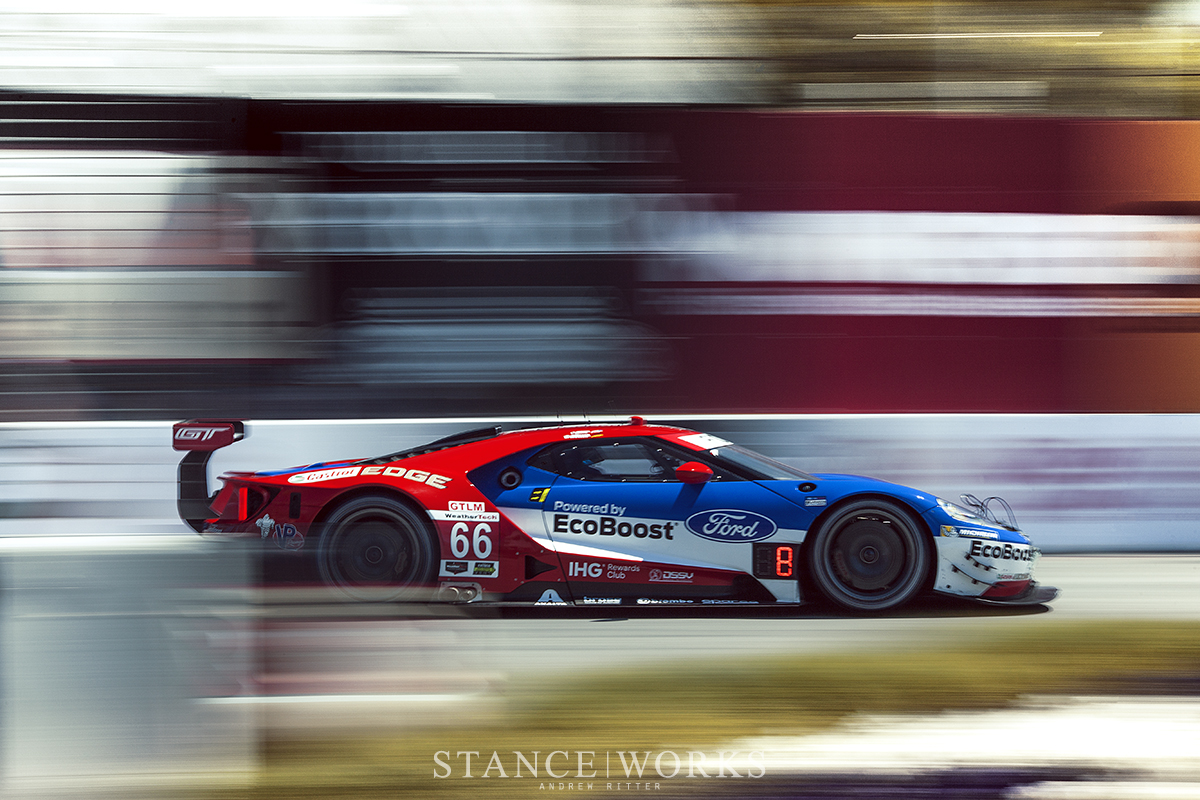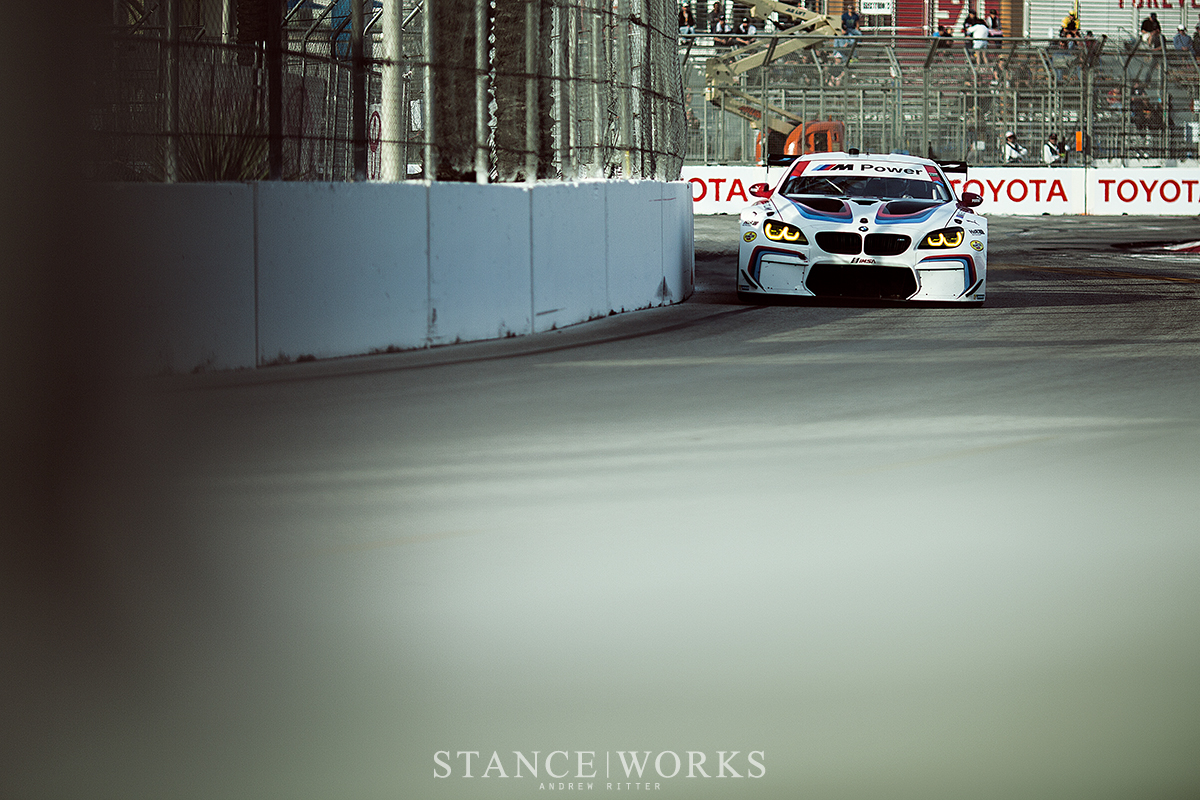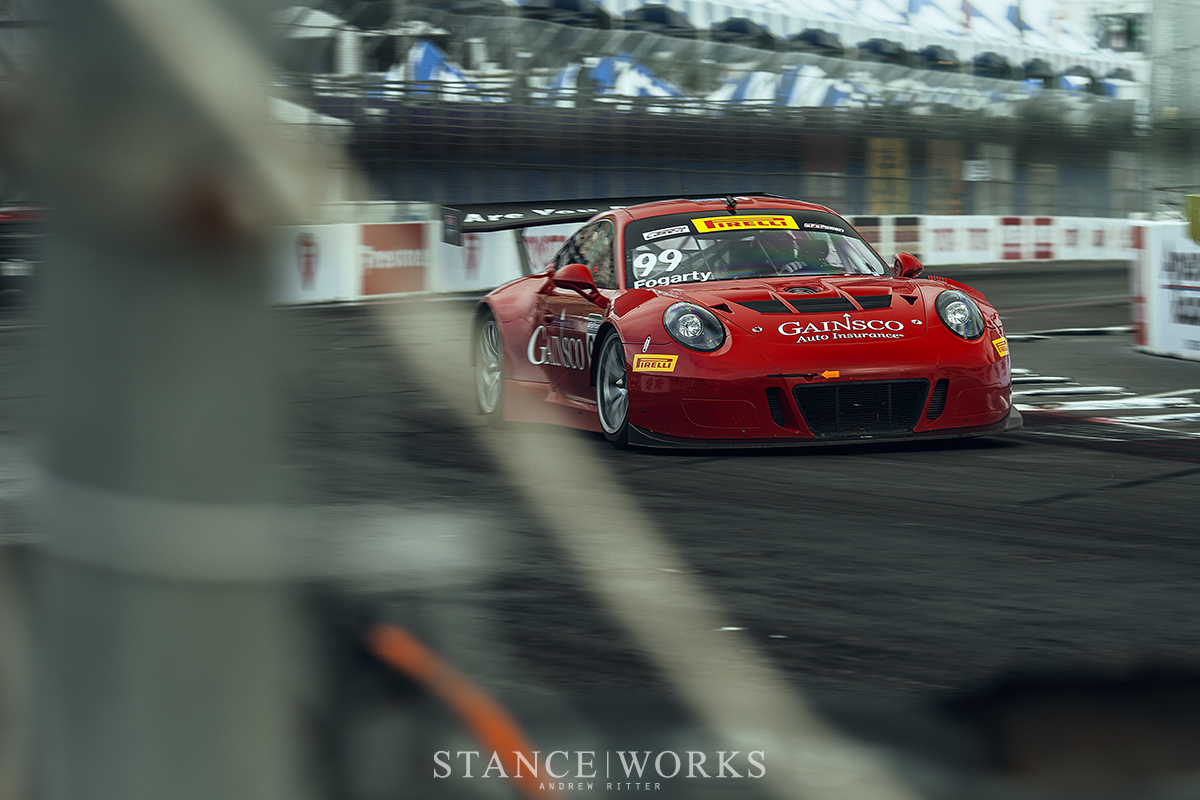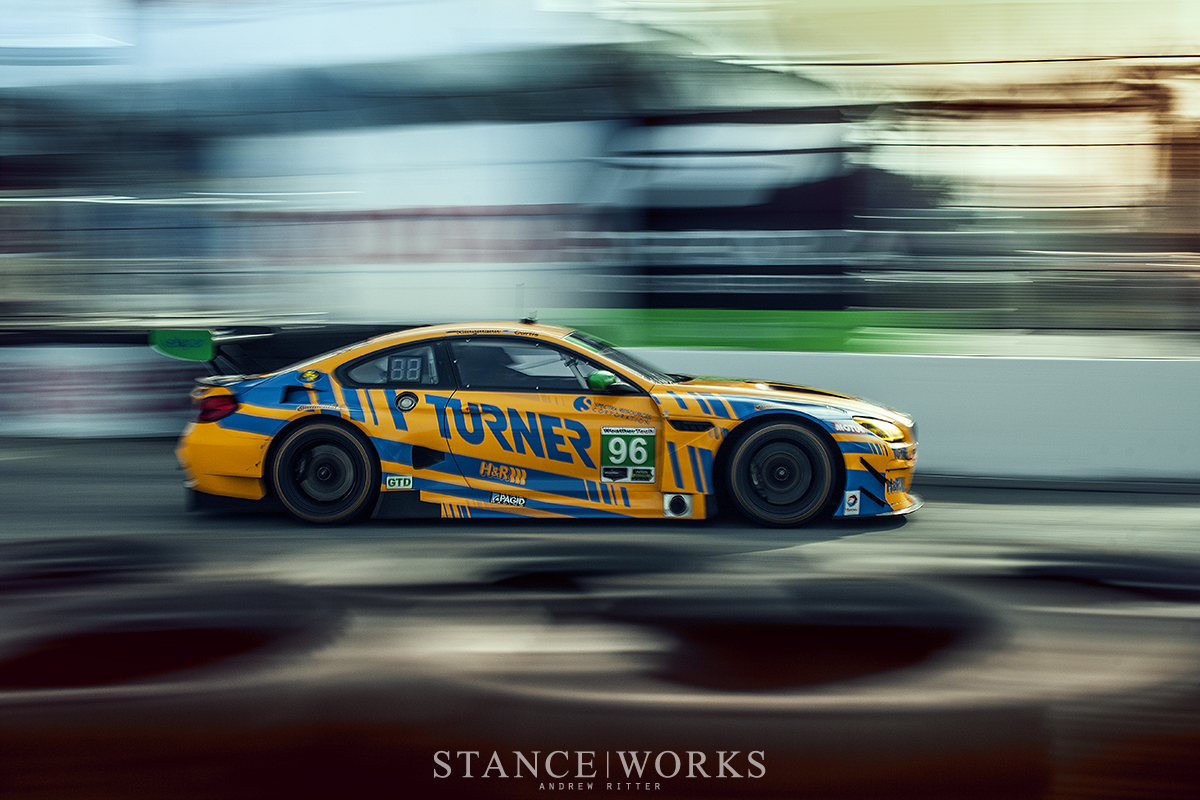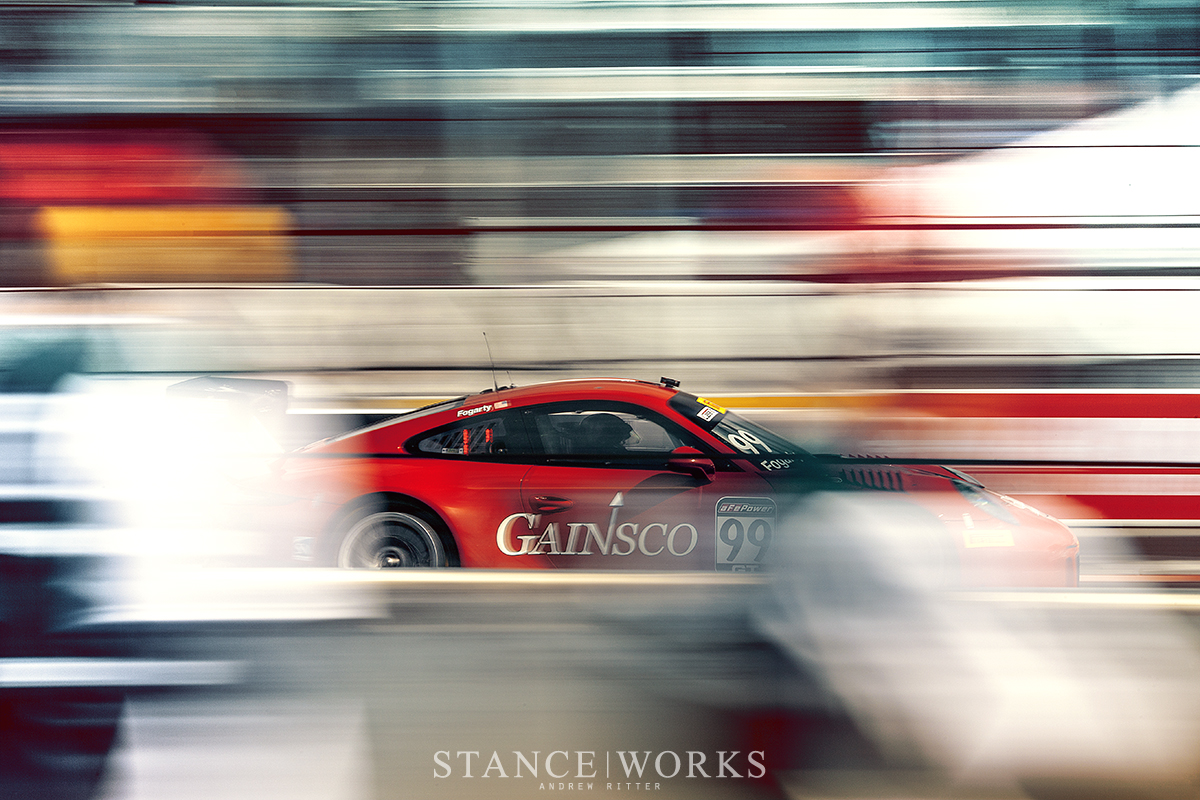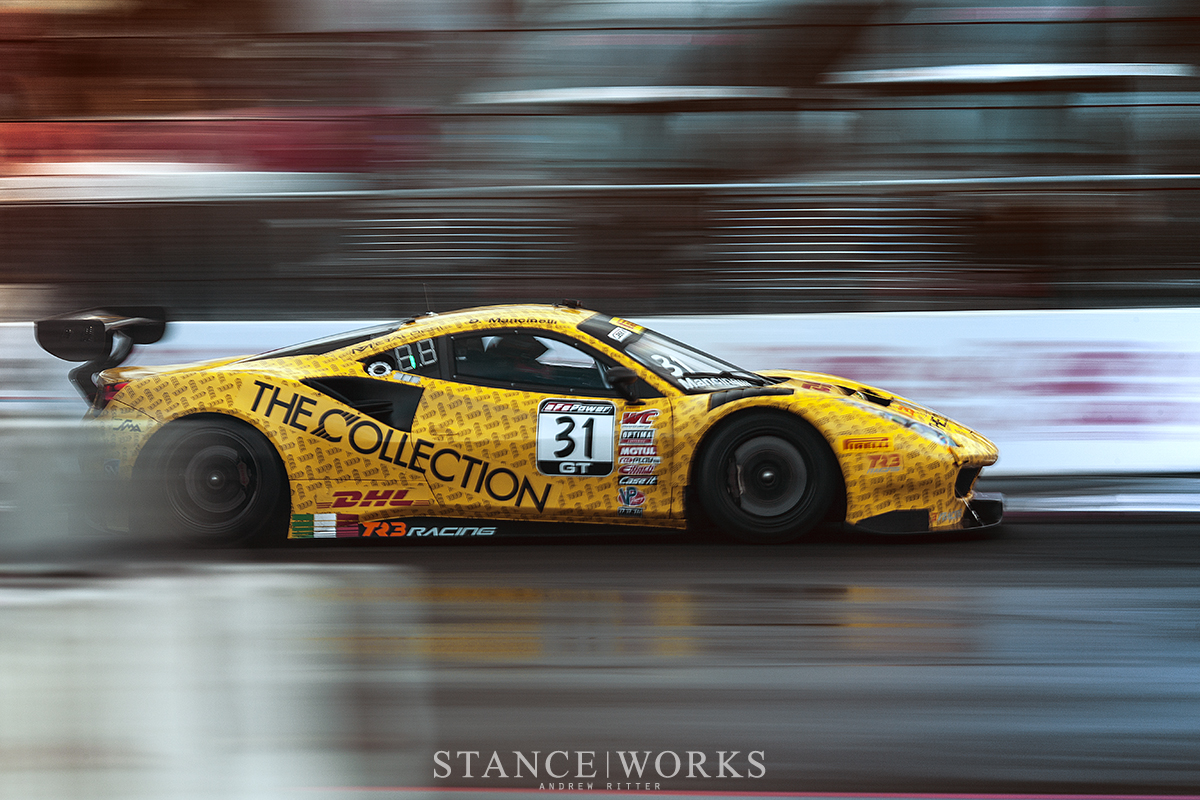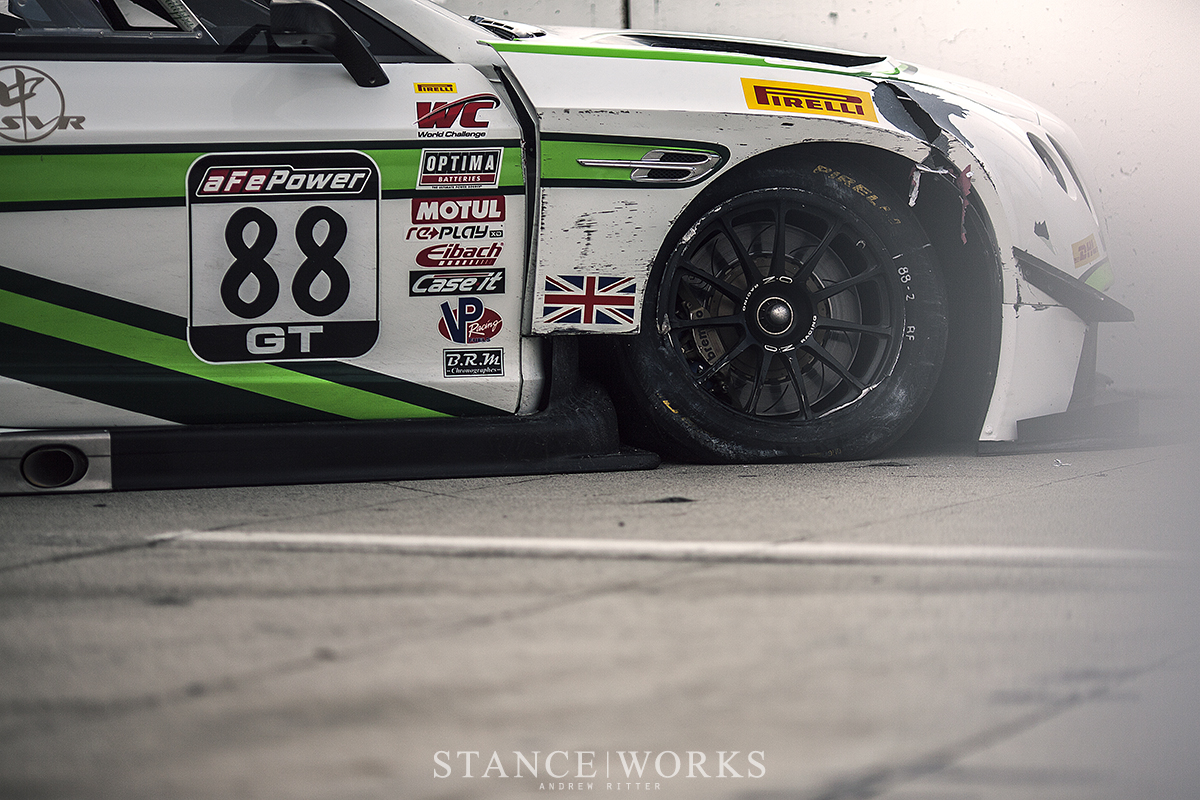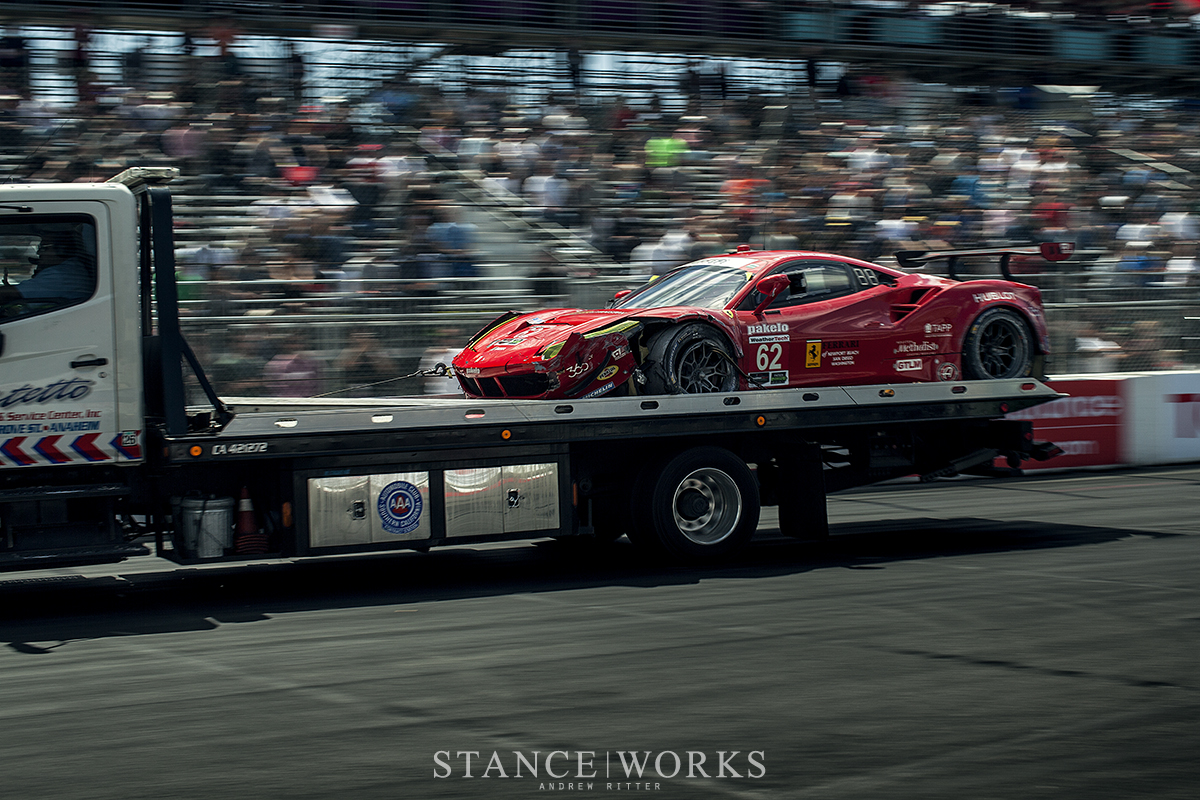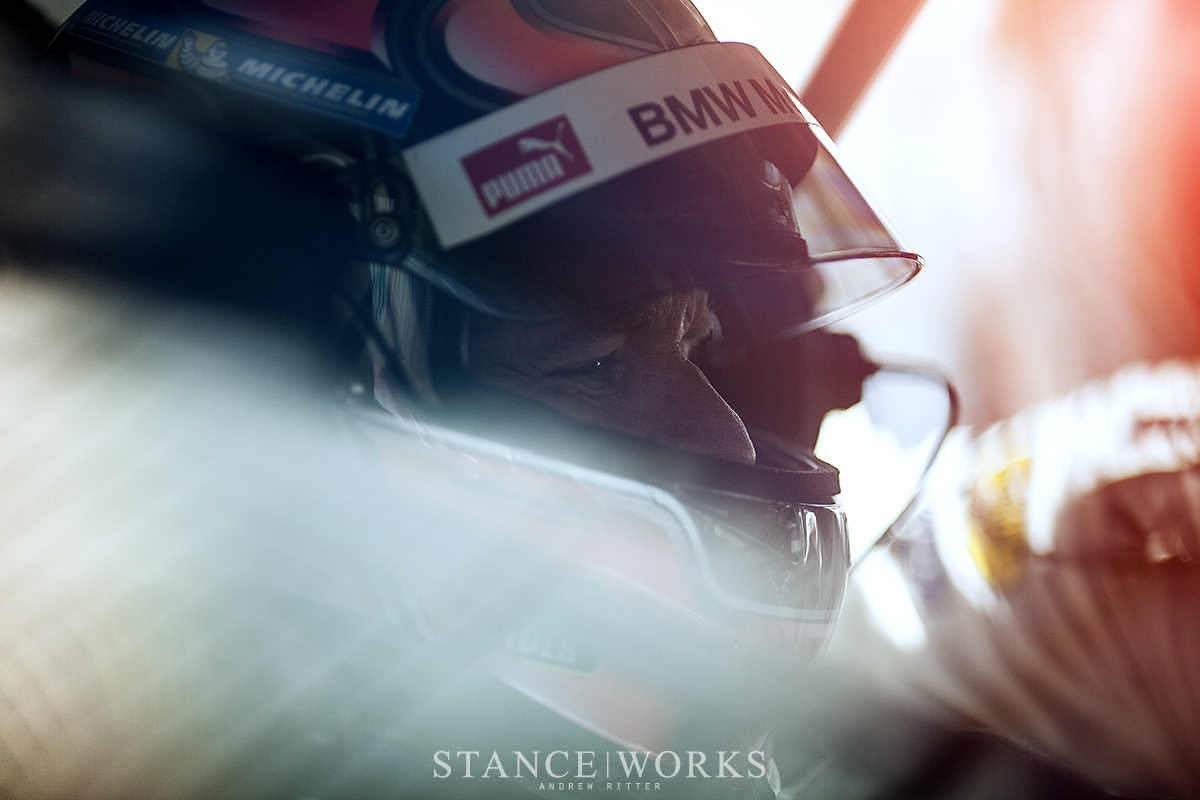
Racing In the Streets – 2017 Long Beach Grand Prix – IMSA
Street circuits hold a certain allure. As race engines echo off of the buildings that once lined your daily commute, race flags pepper the city skyline with color. For a weekend, the city transforms and fans line each block to catch a glimpse as their favorite drivers scream by. Street corners where pedestrians once waited become split second apexes before the long straight down a back street. From sidewalks arise front row seats to the battle at hand and chain-linked fences snake through the cityscape, carving a challenging course for some of the world's best racers.
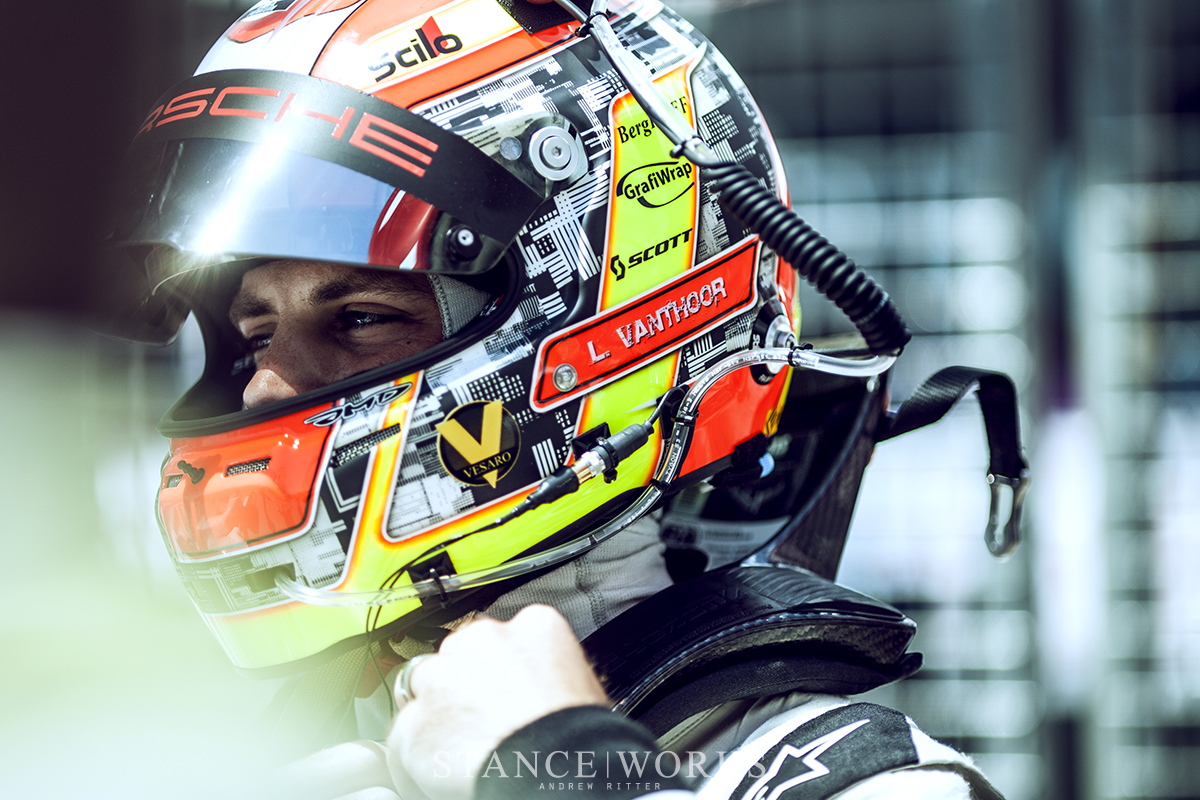
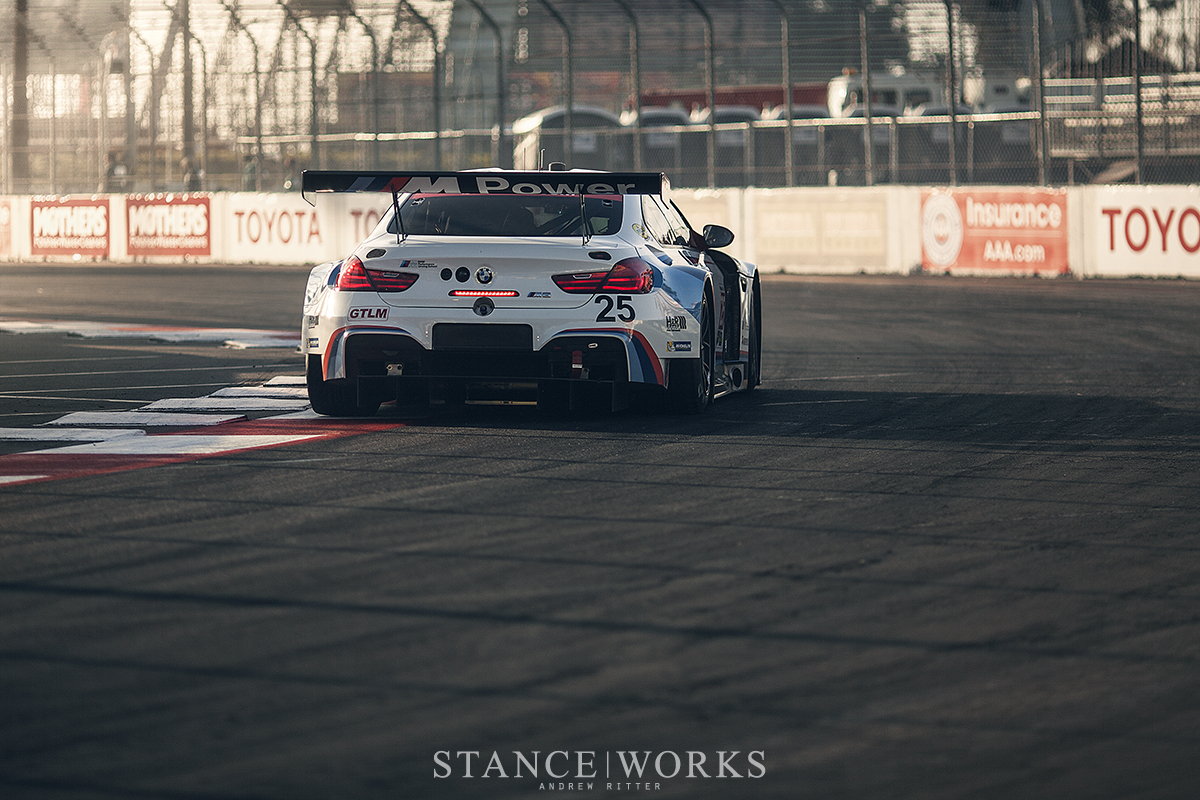
With the mystique surrounding city circuits comes a risk that had not sunken in until I stood on the Long Beach streets as the GTLM cars rolled into their grid positions. Drivers donned safety equipment as they prepared for the one hour and forty minute race, but it was clear that tension ran through the excitement that buzzed around the starting line. When you sit and talk with the drivers about the tracks that comprise each season, they'll point out corners that can be pushed a little beyond ten tenths and curbs that can be hopped to gain a bit more speed through the next section. With forgiving grass sidelines and long, sandy run-offs, many tracks offer a margin of error that allows drivers to push themselves right up to the edge of possibility and beyond, reeling it back just a tad when they breach the limit. With such comfort, the best of the best are able to hone in on perfecting lap times and squeezing out every last tenth of a second from the track, but it became clear to me that the drivers were not awarded such comfort on these street circuits.
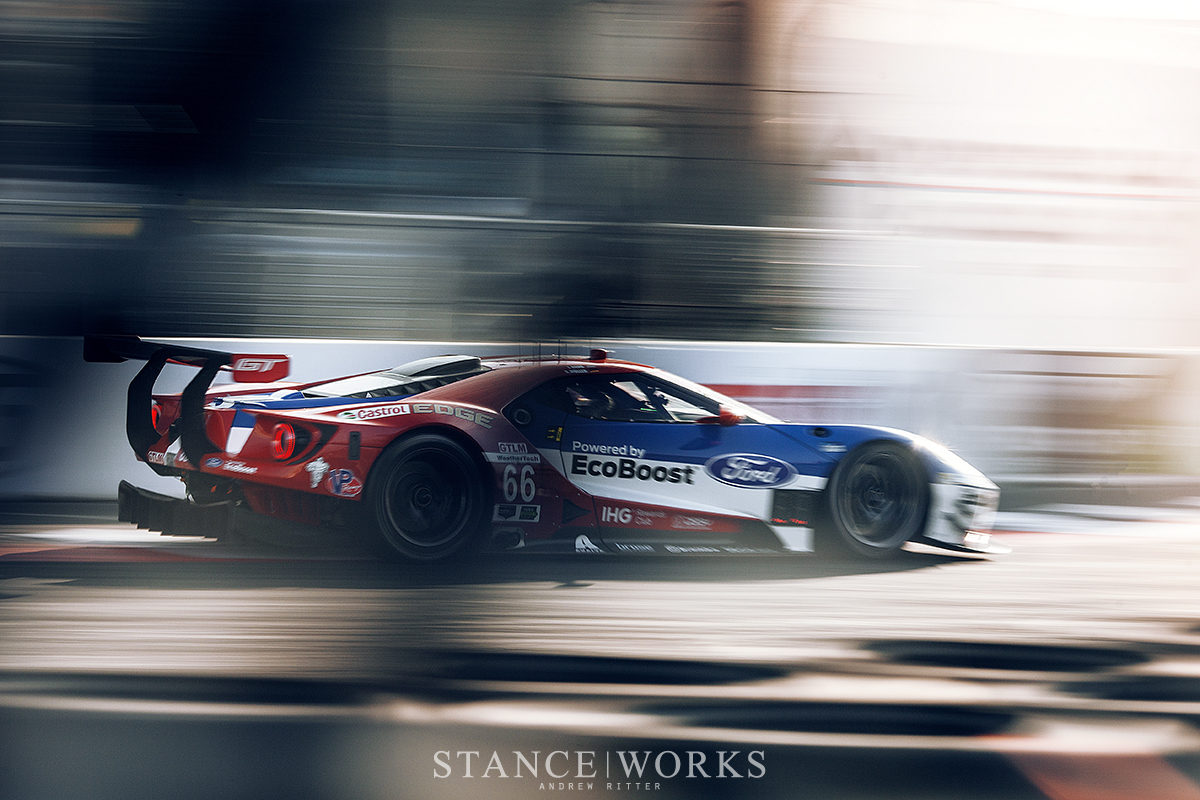
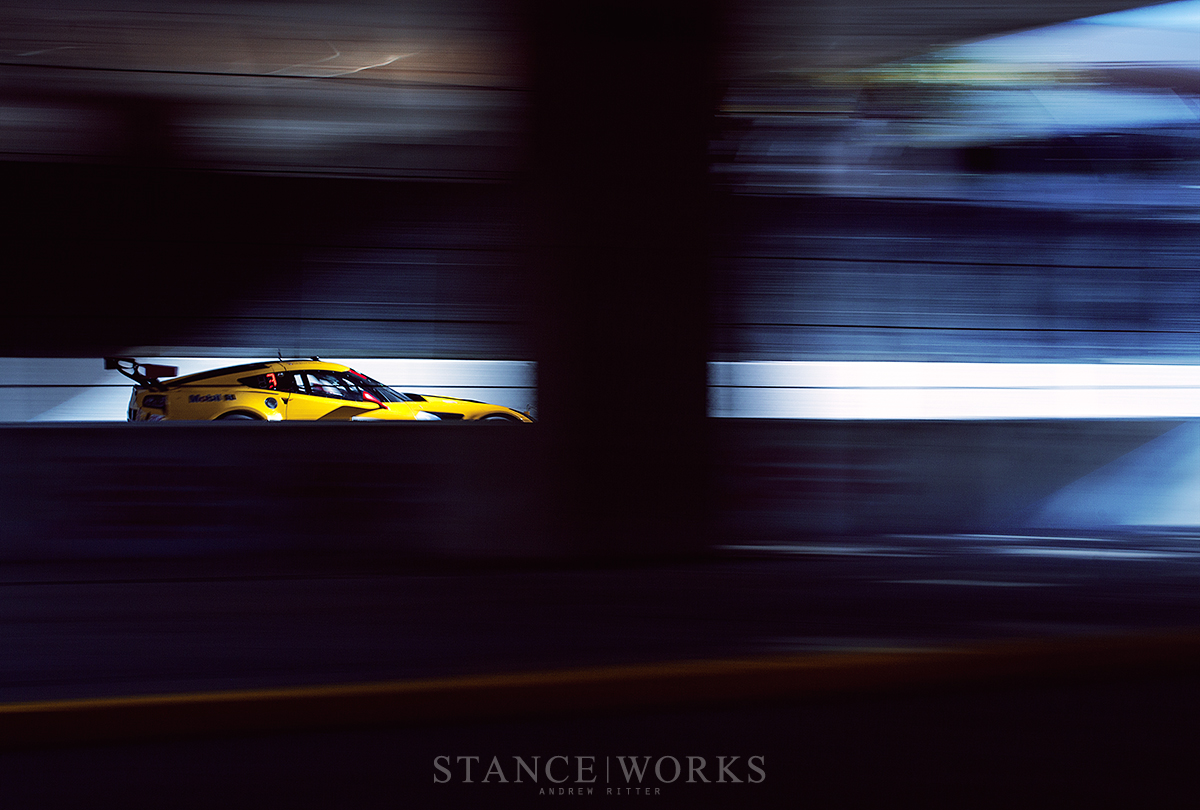
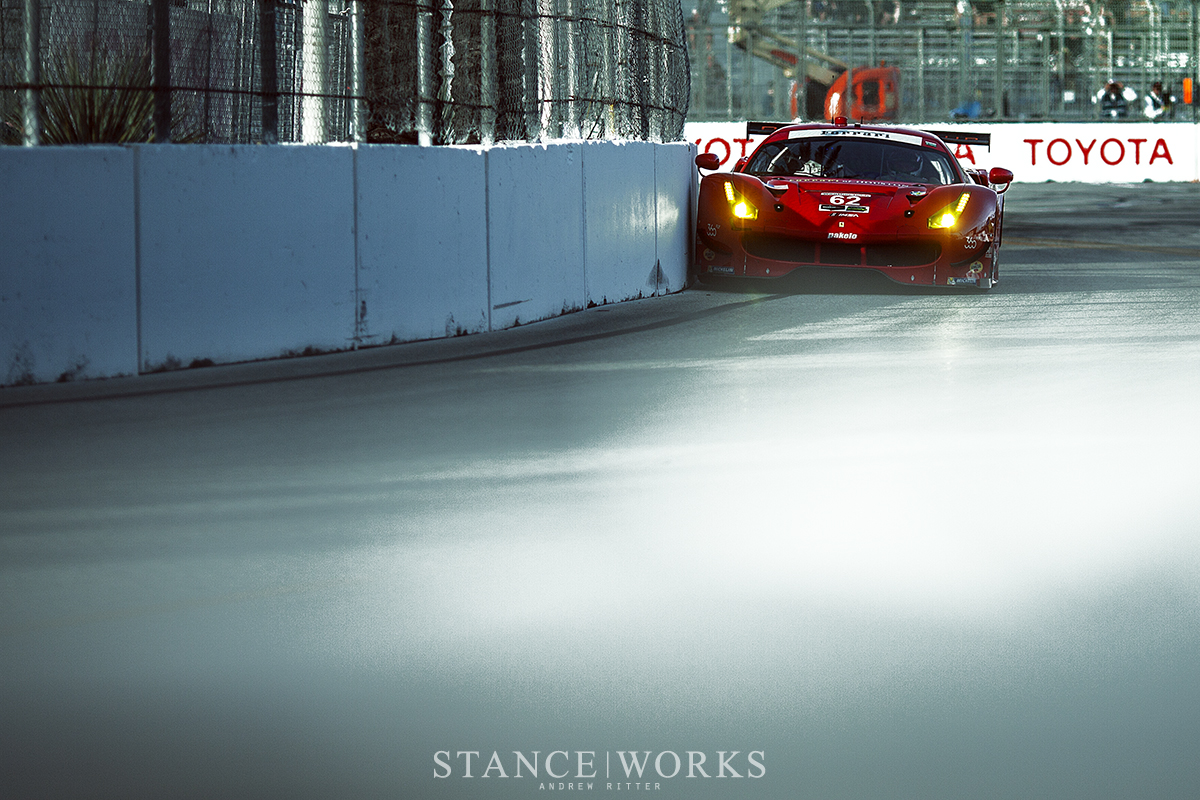
In place of the soft grass stood menacing concrete barriers, flush with the outside of the track's first left-hand turn. Any margin for error was completely tossed aside, and walls of advertising stood in its place. One slight miscalculation at the apex could introduce carbon fiber quarter panels to the less forgiving barricades in a flash. Around the next bend, the cars dodged around the infamous dolphin fountain, splitters trimming the unfortunate flowers that reached out over the tarmac. Before long, the cars are turning off Shoreline Drive and sliding onto Pine Avenue in front of the droves of spectators that line the stairs and convention center patio. As the cars become lighter and crest the hill, the drivers wrestle their way over the uneven streets to dive down on the outside with the next apex in sight.
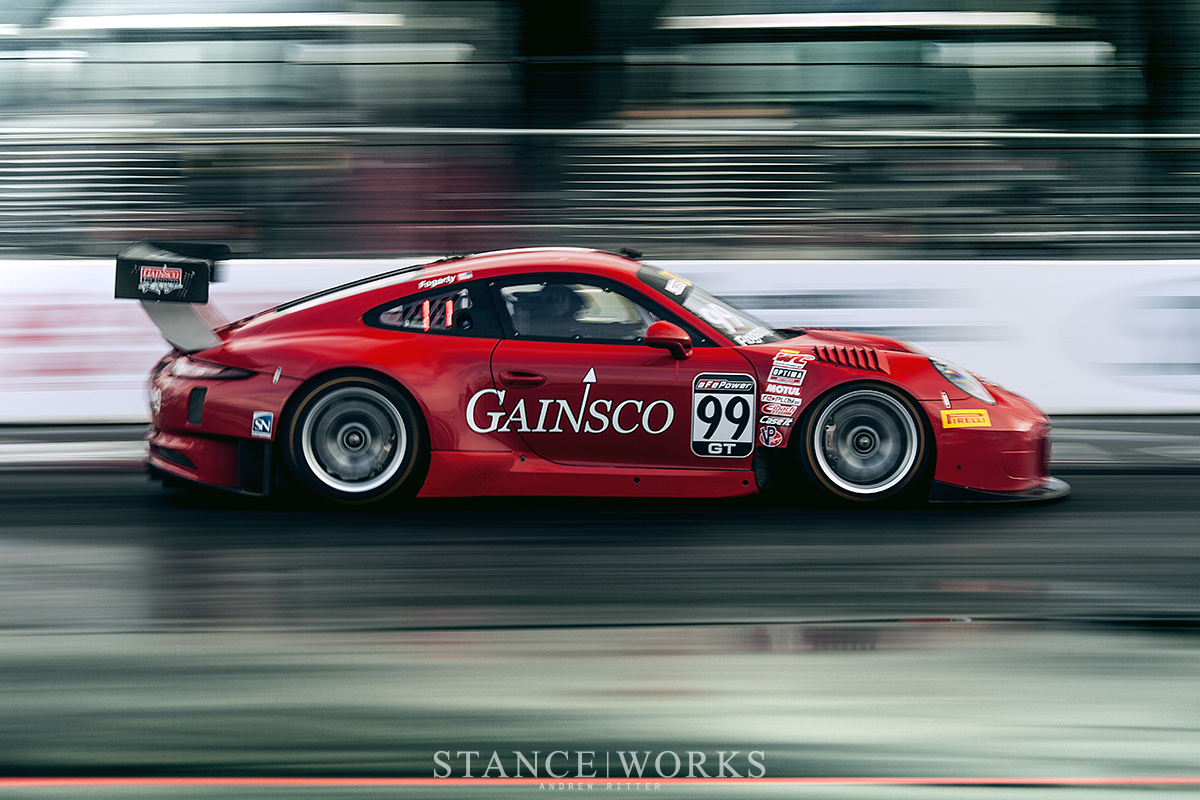
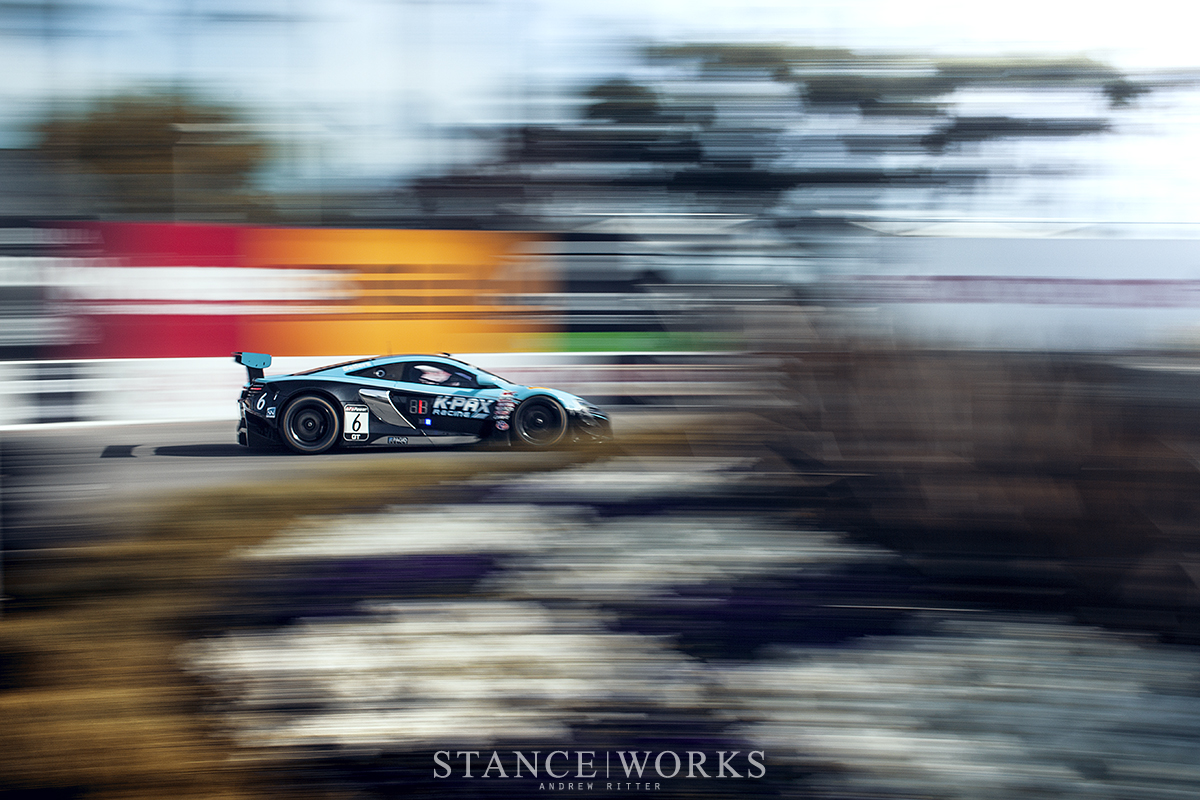
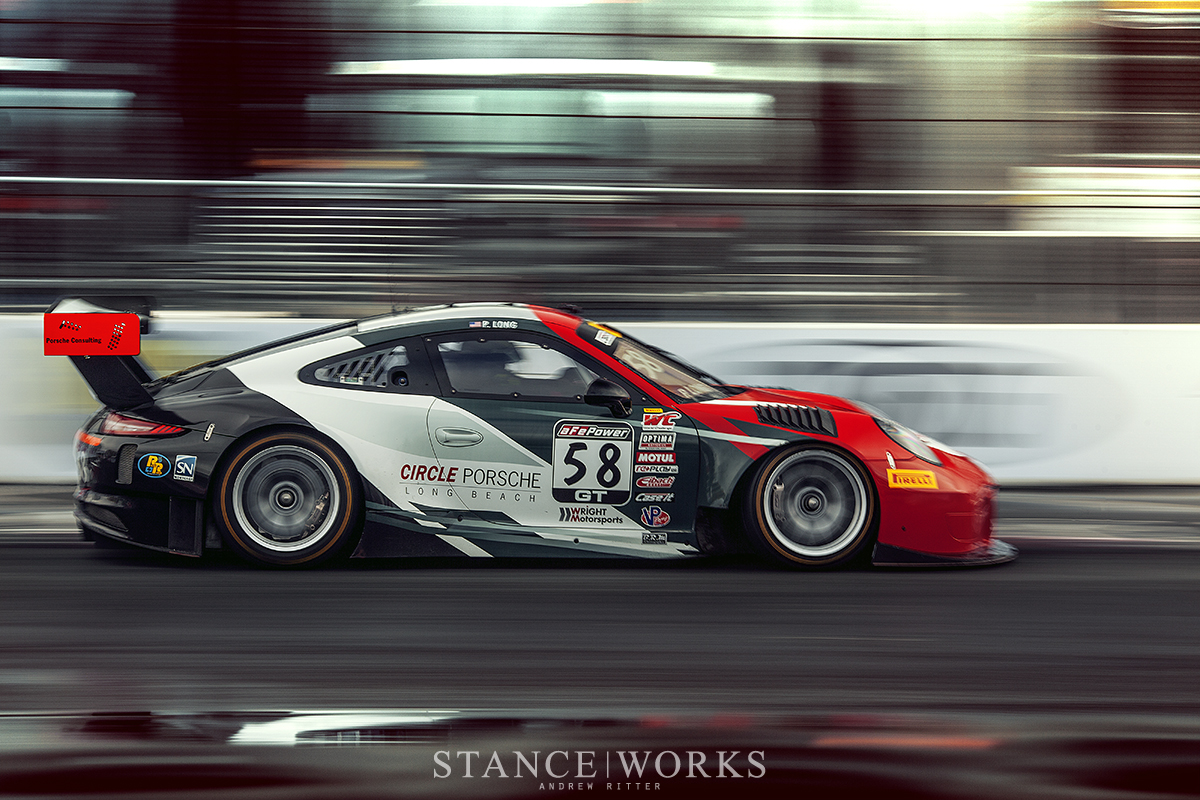
From there, it's a mad dash down the straight formed by the curbs of Seaside Way. In a matter of a couple seconds the drivers are suddenly screaming through a dark corridor, the sunlight flashing through openings in the bridges above. The narrow tunnel echoes the exhaust chorus to a level that pierces through my ear plugs, and the drivers focus ahead as the speedometer quickly climbs, guided on each side by the concrete and chain link that looms ever closer. In an instant, pupils struggle to take in the sudden sunlight and hunt for the approaching apex. The long straight abruptly ends with a short run-off and a tight right hand turn to squeeze under the bridge and the drivers must bring their cars back under control in time, sliding just enough to miss the barriers. Under the bridge, the course hops from street to parking lot tarmac, challenging the teams' suspension settings and threatens to disrupt the car and send it against the outside wall. The loop begins all over again as drivers jockey for position, diving into the narrow hairpin and fighting to be the first around the median strip. Once the curb has passed by, the gas pedal goes down and the driver readies himself for another dance around the Long Beach streets.
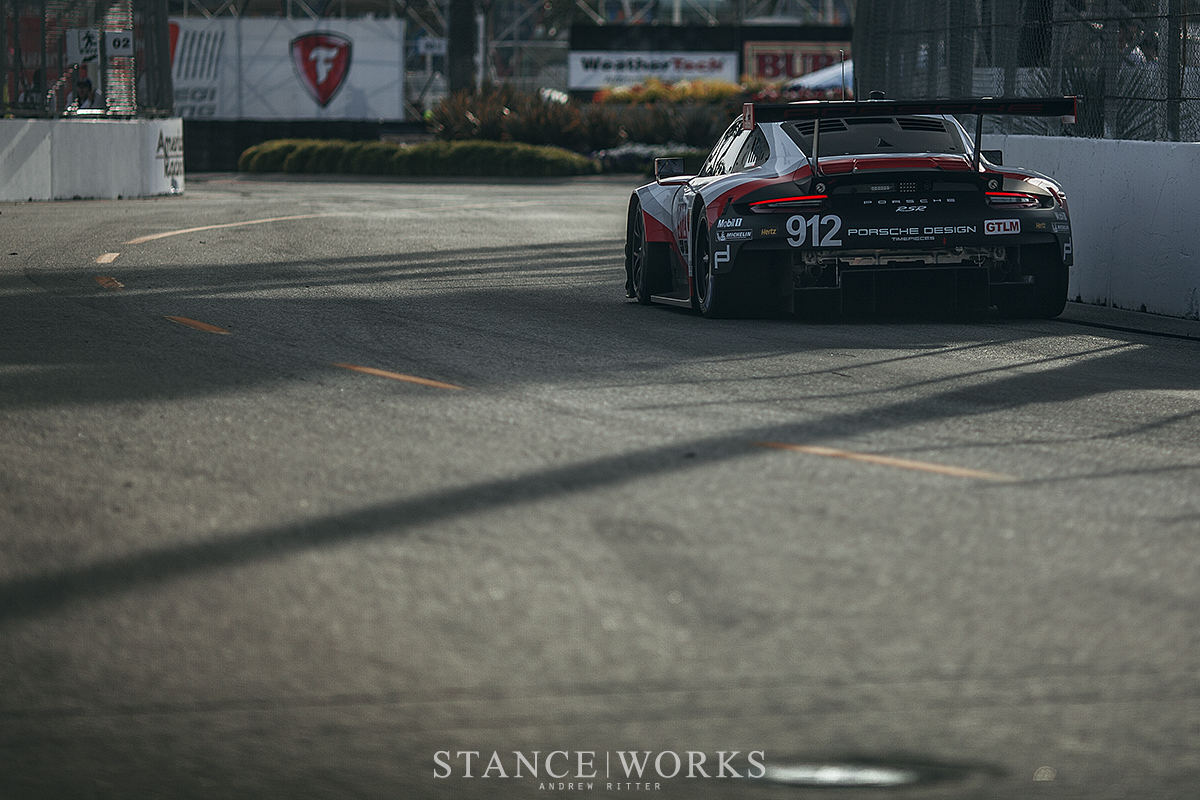

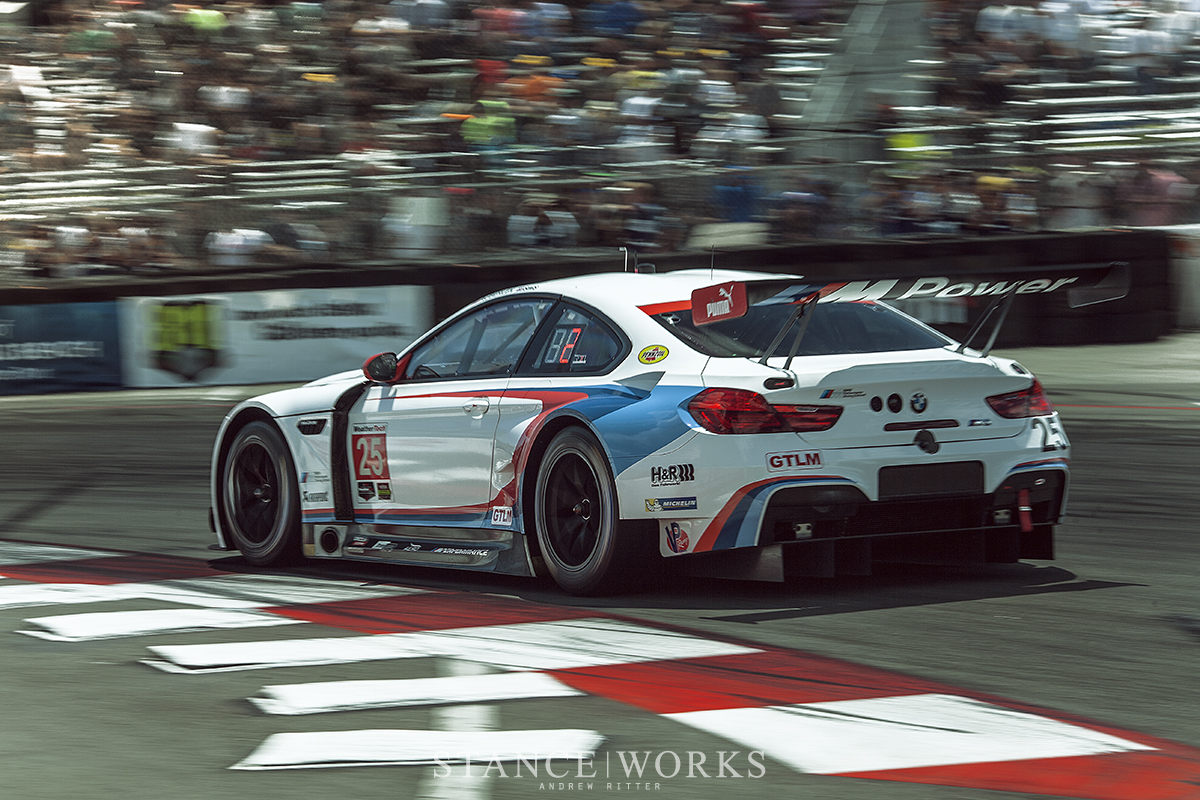
With three full classes competing on the same circuit, I began to truly see the unforgiving nature of the narrow street circuit that had become such a staple in our calendars. Surrounded by stubborn, concrete walls and drawn over uneven, imperfect pavement, the Long Beach course offers a challenge unlike any other race across the season. With points on the line, the fastest laps often come from dangerously riding on the edge, skimming the walls and leaving paint behind on the concrete barriers. This year, a number of cars left on trailers with cracked wheels and shattered carbon fiber strewn about; a bitter illustration of the fine line between the perfect run and total disaster. Pile ups at the beginning and the end of the race quickly dashed dreams and disrupted the sense of order, but the victors fought their way through the city streets and claimed a spot on the podium under the spray of champagne. Then, all of a sudden the roar of race weekend turns to a whisper, and overnight, the city streets return to their job as commuter routes. Rubber lines scrubbed around each turn are the only enduring testament of the hard fought battle, but the excitement of race weekend still echoes on.
